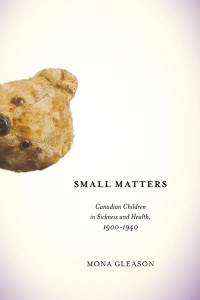Join us for a session entitled: “Unraveling Common and Uncommon Threads: Writing the History of Childhood and Youth in Canada”
This bilingual roundtable will examine the conference themes of intersections and edges by asking contributors to unravel the common and uncommon threads within the history of childhood and youth in Canada. Contributors will identify and interrogate the fundamental theories and methodologies in Canadian historiography, as well as trends in the growing field of global and transnational histories of childhood and youth. Key themes to be discussed include the relevance of age, the search for children’s voices, and the emphasis on constructions and deconstructions of the normal, the deviant, and the symbolic child. The panelists will consider how these threads are used in teaching and research to connect and unwind the common and uncommon historic experiences of young people in Canada.
Panelists:
Dr. Jonathan Anuik, Department of Educational Policy Studies, University of Alberta
Dr. Cynthia Comacchio, Department of History, Wilfrid Laurier University
Dr. Mona Gleason, Department of Educational Studies, University of British Columbia
Dr. Dominique Marshall, Department of History, Carleton University
Chair and Commentator:
Dr. Jason Ellis, Department of History, Trent University-Oshawa; Faculty of Education, Western University; Contemporary Studies, Wilfrid Laurier University.
Commentator: Dr. Tarah Brookfield, Youth and Children Studies, Wilfrid Laurier University
(Co-presidents, History of Children and Youth Group of the CHA.)
(1) “Chronology, Biology and History: Why Age Matters”
Cynthia Comacchio, Department of History, Wilfrid Laurier University
Age and generation mark identity and status, are social constructions as well as biological classifications, and are fundamentally ‘historical’ as they mutate in accordance with our subjects’ lives and their larger ‘moment.’ That they are intrinsic to the subject matter that we explore, just as much as the social historian’s ‘holy trinity’ of class, gender and ‘race,’ is commonly acknowledged among historians. Their critical application as categories of analysis, however, is less evident, despite recent discussions about the possibilities of such approaches. My contribution to this roundtable explores the reasons why age and generation always signify in power relations, especially where children, historically the most subordinate of citizens, are concerned.
(2) “Beyond the Fetish of ‘Voice’ – Theoretical and Methodological Innovation in the History of Children in Canada”
Mona Gleason, Department of Educational Studies, UBC
A now common feature of many histories of children and youth in the Canadian context and beyond is a discussion regarding the “voice” of children as the most powerful (and ostensibly most authentic) source of information about their past lives. Scholars, myself included, have routinely evoked the idea of the sanctity of children’s voices as the necessary ingredient for a truly representative history of young people. Where do we find these voices and what are the mediating factors that make them more complicated than we might first recognize? What assumptions (and omissions) frame this focus on children’s voices? This paper seeks to explore more deeply what we mean by children’s voices and whether this preoccupation has precluded other, perhaps more innovative, ways to research and write the history of children and youth. Our common interest in weaving the perspectives of young people in the past might be furthered by taking up uncommon threads.
(3) “Canadian Children’s Political Action: Transnational Dimensions, Discoveries and Suggestions”
Dominique Marshall, Department of History, Carleton University
This contribution represents a reflection on the political role of children and childhood in Canada in light of the histories of humanitarianism, state formation and children’s rights, which I have been researching. Around a series of cases, it will suggest ways by which children and notions of childhood have influenced Canadian public life. It will discuss the concepts most often used by scholars to address these issues, such as agency, power, resistance, autonomy, rights, citizenship, identity, authority, appropriations, discourses, trauma, and innocence. It will also pay a particular attention to the transnational phenomena involved in these stories.
(4) “The Futility of the Hypothetical in Canadian Childhood and Youth: Practical Considerations from Education”
Jonathan Anuik, Department of Educational Policy Studies, University of Alberta
Real and imagined children and youth are the repository for Canadians’ fears and anxieties. Such emotions are also intellectual pillars of normal childhood. Sutherland (2000) and Comacchio (2008) demonstrate how philosophy becomes practice in enclosed spaces of childhood and youth. Subsequently, appropriate behaviours come to define normal childhood and youth in elementary and high schools. The outcome: teacher candidates rely on the hypothetical to predict the normal outcome. In my talk I take these intellectual underpinnings of Canadian concepts of childhood and youth and put them into practice as an instructor of Canadian childhood history courses whose students are undergraduate pre-service teacher candidates. I demonstrate how teacher candidates come to understand how historical and contemporary philosophies of normal childhood and youth affect their practices. Specifically, this presentation draws on my weekly lecture and seminar discussion of Childhood and Youth, Gender, Sex, and Sexuality in Canada, and shares promising practices that motivate students beyond the hypothetical and the normal, fear and anxiety. I argue throughout that historians must be mindful of the consequences of anxiety and fear of real and imagined childhood and youth for contemporary educational issues in Canadian society.


